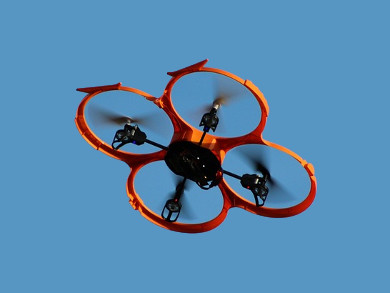Performing analytical measurements in remote areas brings with it a special set of challenges not encountered in the laboratory, especially in underdeveloped countries. On the bench top, the polymerase chain reaction (PCR) is a powerful, rapid and routine fluorescence-based technique for diagnosing infectious diseases. It relies on cycles of heating and cooling, which, using a conventional design, would require too much power to operate portably in the field.
Victor Ugaz and colleagues at Texas A&M University, College Station, TX, USA, have modified a convection heating approach to perform PCR analysis with a standard 5 V USB power source. Using this with 3D-printed components and a smartphone for the fluorescence analysis, the team assembled a functioning PCR lab and mounted it onto a consumer-class quadcopter drone. They demonstrated reliable PCR analysis of bacterial and viral DNA during test flights at altitudes of up to 100 feet. Separately, they adapted a drone’s rotors into centrifuges for in-the-field sample preparation.
The team envisages flying their “lab-on-a-drone” into a remote area for sample collection, then performing in–flight analysis, using the smartphone’s connectivity to relay the results to scientists elsewhere. It is possible that this incredible repurposing of off-the-shelf equipment might one day form part of a routine response to an outbreak of disease.
- Lab-on-a-Drone: Toward Pinpoint Deployment of Smartphone-Enabled Nucleic Acid-Based Diagnostics for Mobile Health Care,
A. Priye, S. S.-S. Wong, Y. Bi, M. Carpio, J. Chang, M. Coen, D. Cope, J. Harris, J. Johnson, A. Keller, R. Lim, S. Lu, A. Millard, A. Pangelinan, N. Patel, L. Smith, K. Chan, V. M. Ugaz,
Anal. Chem. 2016.
DOI: 10.1021/acs.analchem.5b04153



